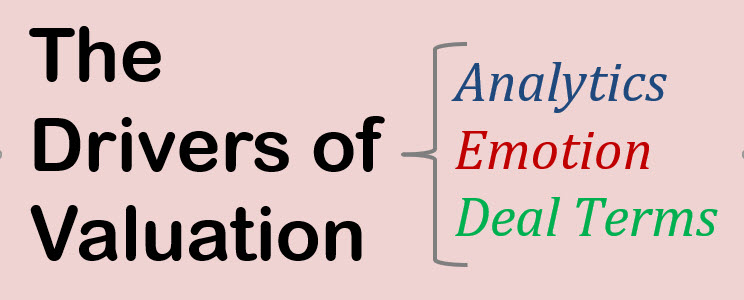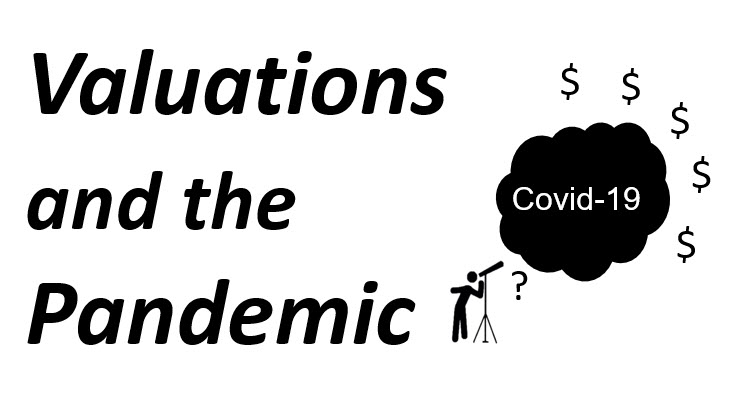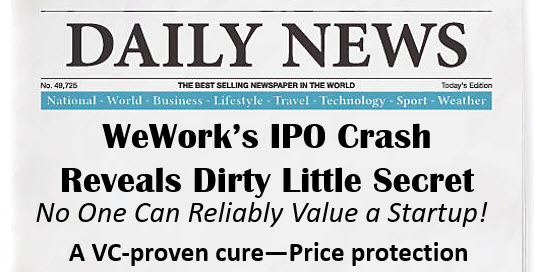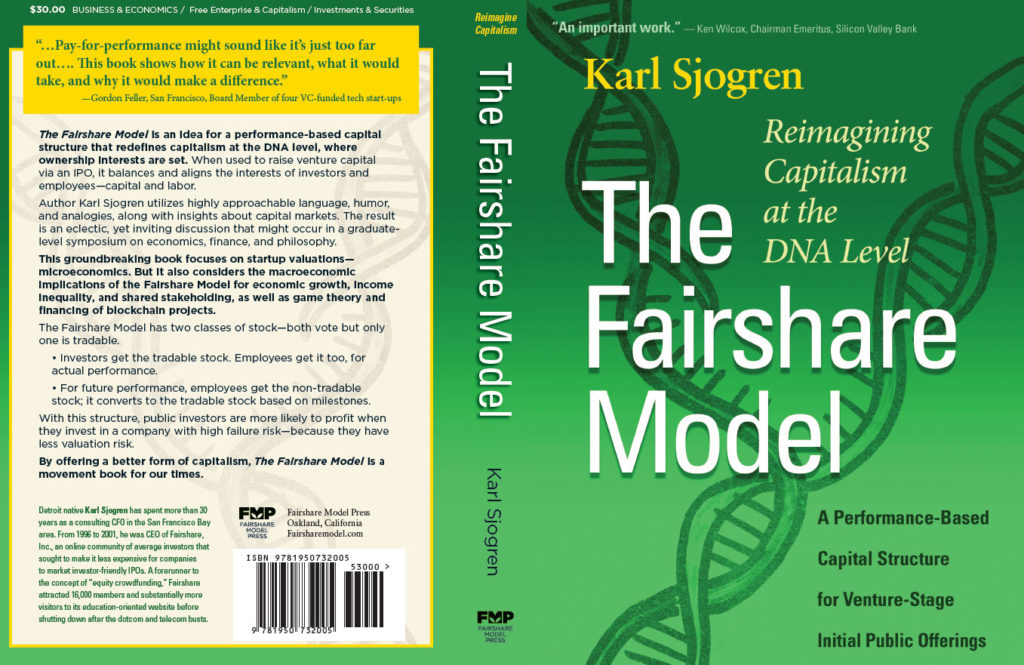The last of three articles on corporate valuations and capital structures.

“What’s a simple definition of complexity theory?” I asked that of someone involved in the study of it. He replied, “It’s the study of how simple changes affect complex systems.”
People often feel powerless to affect complex systems. But such systems are dynamic; they change if sufficient pressure is applied to key points. Once you allow for the possibility of change, its intriguing to consider the possible effect of simple ones.
Capitalism is a complex system. A key part of it, capital formation, involves setting a price—a value— for a company when it sells new stock. Investors also do it when they trade existing shares.

Capital formation and valuation are subjects that I have studied for years. My 2019 book is The Fairshare Model: A Performance-Based Capital Structure for Venture-Stage Initial Public Offerings.
Its tagline is “Reimagining Capitalism at the DNA Level.” That’s because a capital structure is a company’s DNA.
It defines ownership interests and voting rights—so everything that capitalism is (or can be) flows from the expression of qualities that originates in a capital structure.
The Fairshare Model is an idea for a performance-based capital structure for companies that raise venture capital via an initial public offering. Its mission is to balance and align the interests of investors and employees; to offer public investors a deal comparable to what venture capitalists get.
It has two classes of stock. Both vote but only one can trade. Investors get the tradable stock, which I call “Investor Stock”—common stock. For pre-IPO performance, employees get it too. For post-IPO performance, employees get the non-tradable stock, which I call “Performance Stock”—a preferred stock. Based on milestones, Performance Stock converts into Investor Stock.
The structure is simple—its complexity flows from a question that is both philosophical and practical: “What is performance?”
Shareholders can answer that anyway they wish, and there will be variation based on a company’s industry, stage of development, and the personalities involved. Likely measures include:
- A rise in the company’s value, measured by the price of its Investor Stock.
- Development goals, such as release of products.
- Financial measures like revenue and/or profit.
- The eventual acquisition price, if applicable.
- Measures of social good, if relevant.
The idea behind the Fairshare Model is simultaneously radical and ordinary.
It is radical because it presents a different philosophy about how to structure ownership interests in public companies whose value chiefly comes from their uncertain promise of future performance. Such companies have raised venture capital for decades via Wall Street IPOs. Another unique aspect of the Fairshare Model is that it presents a way for average investors to participate in venture capital investing on terms comparable to what venture capitalists get.
The Fairshare Model is ordinary because it encourages the public capital markets to work the way most markets work, where sellers compete for buyers by offering a better deal (i.e., lower prices and better terms). Remarkably, this isn’t common with a conventional capital structure; companies don’t compete for public investors by offering lower valuations and better protections.
This reflects weak market forces. IPO issuers and Wall Street banks do not want to compete on deal terms, valuation, and investor protections. In addition, many public investors are unsure what a valuation is, let alone how to calculate or evaluate one.
Oftentimes, “market forces” is a phrase used to explain adverse developments for the middle class, but they can bring better deals to average investors. One way to reimagine capitalism is with stronger market forces that result in a better product and increased competition for public capital. The Fairshare Model promotes this in a win-win manner—with significant benefits for investors and employees.
So, how does one go about changing the DNA of capitalism? By popularizing a new philosophy about the relationship between companies and their IPO investors. The key idea? Treat public venture capital like private venture capital. That is, provide IPO investors price protection, comparable to what venture capital firms get in a private offering. Then reward well-performing entrepreneurial teams with more ownership than they would get if the financing were from a VC firm.
Below, I speculate on the impact the Fairshare Model will have on companies that adopt it. The first two are profound.
Incentive to Offer a Low IPO Valuation
A measure of performance is certain to be a rise in the market value of the company—measured by multiplying the shares of Investor Stock outstanding by the share price. Companies will have incentive to offer IPO investors a low pre-money valuation because doing so makes it likely that Performance Stock will convert to Investor Stock.
To illustrate, assume a company has raised $5 million in private capital and wants to raise $20 million more. Rather than raise it from a VC, it decides to it via an IPO. Comparable companies are valued at $100 million, so you’d expect it to be priced at a $100 million pre-money valuation and have a post-money valuation of $120 million immediately after the $20 million IPO.
With the Fairshare Model, the company might decide to raise the $20 million at a pre-money valuation of $10 million, giving it a $30 million post-money valuation when the IPO closes. The bet will be that secondary market investors will bid up the stock to a $130 million valuation. As that happens, Performance Stock will convert to Investor Stock. That will dilute the ownership of investors, but they will not care because the value of their stock is up!
VCs often say, “I’d rather own a small slice of a big pie than a large slice of a small pie.” It’s the same idea.
Attracting and Motivating Human Capital
Companies that use the Fairshare Model to structure their IPO will have a powerful tool to motivate employees. Like one with a conventional capital structure, they can offer salaries, benefits, and options on its tradable stock.
They can also offer something such a company cannot—an interest in its Performance Stock. It will have value if all the employees deliver the results that trigger conversions. This promotes esprit de corp—a sense of common purpose—among employees.
—————————————————————————-
Some other implications of the Fairshare Model are below.
Marketing
All companies can encourage customer loyalty by allowing them to buy their IPO shares, but they are more likely to profit—hence be more loyal—when the Fairshare Model is used.
Employee Compensation
Executives—indeed, all employees—will have incentive to limit demands for compensation if profitability is a performance measure. Doing so makes it more likely that Performance Stock will convert.
Employee Stock Options
Performance Stock provides a direct link between work and reward.
On the other hand, stock options create an indirect link. There are two reasons for this. One is that vesting—the right to exercise an option to buy the underlying stock—is typically tied to the passage of time, not the achievement of specific goals.
The other reason is that the reward is tied to stock price appreciation. That is, the reward is only a true reward if the stock is higher after the option vests than it was when the option was granted. If the stock price is at or below the exercise price (usually, the market price when the option was granted), there is no reward —the stock can be purchased on the market for the exercise price or less.
When a company is private, this suffices because valuations tend to be higher in the public market than in the private one. Once a stock is pubic, however, the prospect for appreciation diminishes because valuations in the public are higher—sometimes excessively so.
Here’s the rub—the more enthusiastic public investors are, the less likely it is that employees will be motivated by new options. Indeed, they may feel it will take an act of God to keep the stock as high as it is, let alone increase it. It’s ironic that options are less of a motivator when a company is public because that’s when number of people invested in its success is highest.
That said, options should be a better motivator when a company uses the Fairshare Model because the value of future performance will not be fully baked into the price of its Investor Stock.
Short Selling
Valuing future performance leads to a peculiar game in the public market—short selling. It’s a way to profit when stock falls in price.
An investor who buys a stock takes a “long position,” and money is made if it rises in value. Such an investor takes a positive, long-term perspective, even when the stock is held briefly. The opposite of a long position is a short one; “selling short” is the opposite of “buying long.” So, an investor can profit from thinking positively (long) or negatively (short) about a stock’s prospects.
This sets up a contrast. With a conventional capital structure, the IPO price places a value on future performance and investors in the secondary market speculate on that value. With the Fairshare Model, the IPO price places no value on future performance. Investors in the secondary market can (and will) place one on it, however.
Short selling is fueled by negative energy. It’s a bane of existence for public companies but has a corrective market effect. Venture-stage companies are more vulnerable to it because their future performance is difficult to assess, and often unsteady. That’s why their price is so volatile. Negative energy has its place. But, isn’t it be better for the economy to have positive energy for companies as they struggle?
However you answer, companies that use the Fairshare Model may be less vulnerable to short selling. Why?
- The value placed by secondary investors on future performance is unlikely to be enough to attract short sellers to begin with.
- A short selling strategy will be more complex. If performance is delivered, Performance Stock conversions will be disclosed before they are effective. So the market will have time to assess whether the performance makes the company more valuable or just dilutes the Investor Stock. If it’s the former, the stock will rise. If it’s the latter, the price may drop too quickly for a profitable short sale.
- The Fairshare Model will attract supportive investors who have a long-term perspective—they may buy Investor Stock if it slips in price.
In sum, the Fairshare Model can make it less likely that a short position will pay off, discouraging attention from “the Shorts.”
Stock Buybacks
A stock buyback is the repurchase by a company of its shares trading in the secondary market—it buys stock from shareholders willing to sell. Companies conduct them when they have more cash on hand than they can profitably deploy in their business and it feel that a reduction in the shares outstanding provides more value to shareholders. The idea? If the company has fewer shares, the remaining ones will rise in price—same demand, less supply.
Buybacks provide three potential benefits for executives:
- Insiders can get a better price for their stock by selling into the buyback.
- The value of their stock will rise because fewer shares outstanding will increase earnings per share, a metric that drives stock prices.
- The resultant higher EPS can trigger bonuses and incentive pay.
A Fairshare Model issuer will be less likely to engage in stock buybacks because:
- Few will think that it has too many tradable shares—it will have fewer than with a conventional capital structure. (There will be enough shares of non-tradable Performance Stock to reward several years of performance.)
- Secondary market investors are unlikely to bid up the Investor Stock if it will cause Performance Stock conversions.
- The Investor Stock class is unlikely to support a buyback that results in Performance Stock conversions.
- If a buyback will not encourage Performance Stock conversions, management is unlikely to pursue one—they will view it as a stupid use of cash. A dividend will make more sense, especially if it triggers conversion of Performance Stock.
The Fairshare Model proposes a simple change to how capitalism operates. Its implications go beyond those mentioned above, and the book explores a number of them. It also encourages readers to help launch this movement to reimagine capitalism.
This is the last of three related articles on valuation and capital structures. The prior two in the series are:












